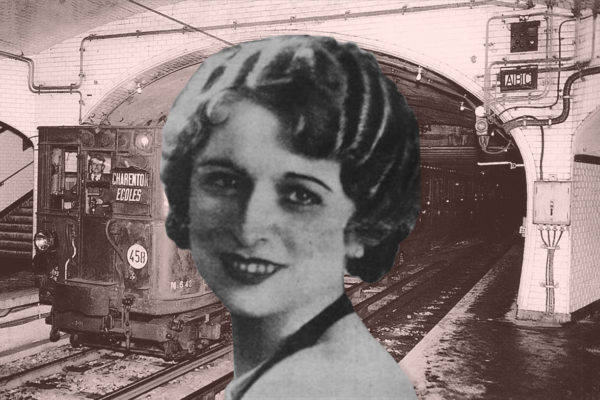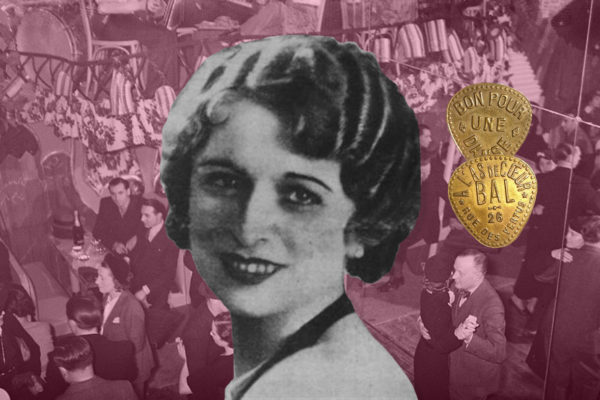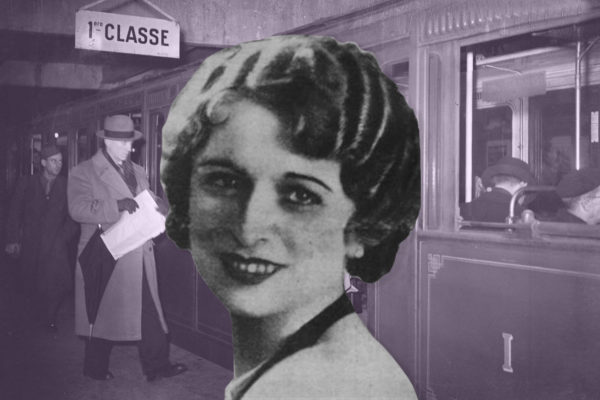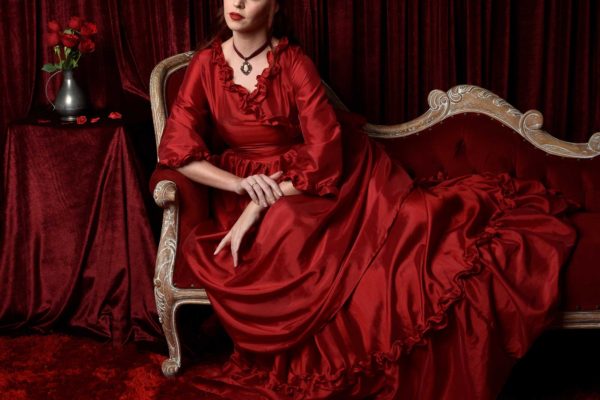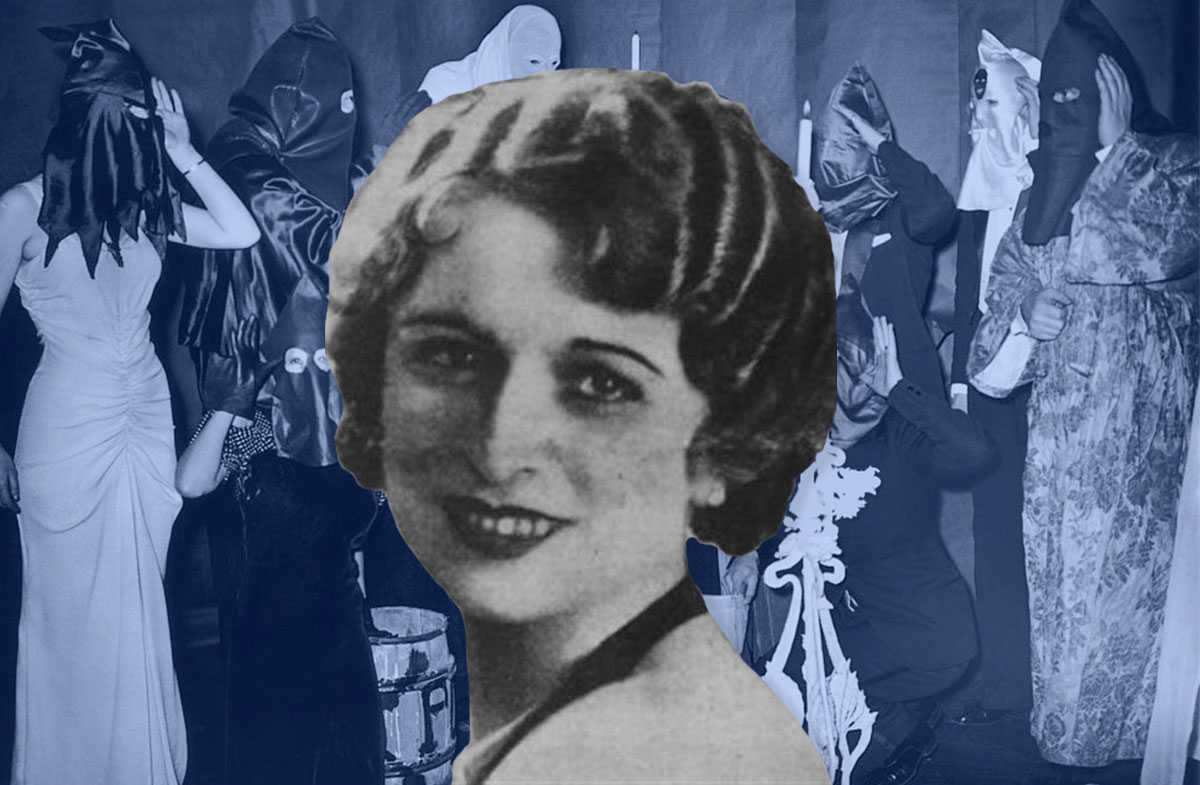
Murder on the Paris Métro: Laetitia Toureaux and the French fascists
Laetitia Toureaux wasn’t the only foreign national in France to be murdered in unusual circumstances in 1937. In January, four months before Laetitia was stabbed in the neck and died on the Paris Métro, a Russian economist, Dimitri Navachine, was knifed multiple times while walking his dog in the Bois de Boulogne. His dog, a fox terrier, was shot dead defending his master. Then in June, two Italian brothers, Carlo and Nello Rosselli, were ambushed while driving in Normandy; they were shot and stabbed to death. By January of the following year, the three crimes were being linked together in the press. The murderers of Navachine and the Rossellis by this point were known. It was the Cagoule, a French far-right terrorist group intent on overthrowing the French government and installing a fascist regime in its place. But was it true that the Cagoule was also behind Laetitia’s death?
Who were the Cagoule?
The Comité secret d’action révolutionnaire (CSAR) was an underground and illegal organisation formed in 1936 by former members of the far-right and royalist Action Français political organisation. Eugène Deloncle, one of the founder members and the group’s leader, was frustrated by the lack of practical action to bring down not just the government – at that time under the Socialist party and led by Léon Blum – but also the third republic itself. His secret group, armed and formed along military lines, wanted to bring about this revolution through acts of terror that would ignite the already explosive political tensions in France. The CSAR, or la Cagoule (“the cowl”, a hooded garment worn by monks) as they were commonly and disparagingly known, were disbanded in November 1937 in a series of arrests that exposed the group’s ideology, its members and its powerful backers. Ultimately the Cagoule failed, but during the 18 months of its activity, the group proved itself to be ruthless towards the public, as well as its own members. The Cagoule carried out bombings, destroyed military equipment, ran guns, attempted assassinations and carried out murders. There is a strong body of belief that Laetitia Toureaux, if not a member of the Cagoule, was working for them. And it was through this work – and a betrayal of a Cagoule secret – that resulted in her murder.
The men of the Cagoule
The Cagoule’s mastermind, their great driving force and ideologue, was Eugène Deloncle, a rich Catholic upper-class engineer who served his country bravely and brilliantly in the First World War but despised the direction in which France had headed ever since. He, like his followers, was a fervent anti-semitic, anti-communist and anti-republican. He wanted the return of the monarchy or – failing that – a fascist dictatorship like that established in Italy by Mussolini, of whom he was a great admirer.
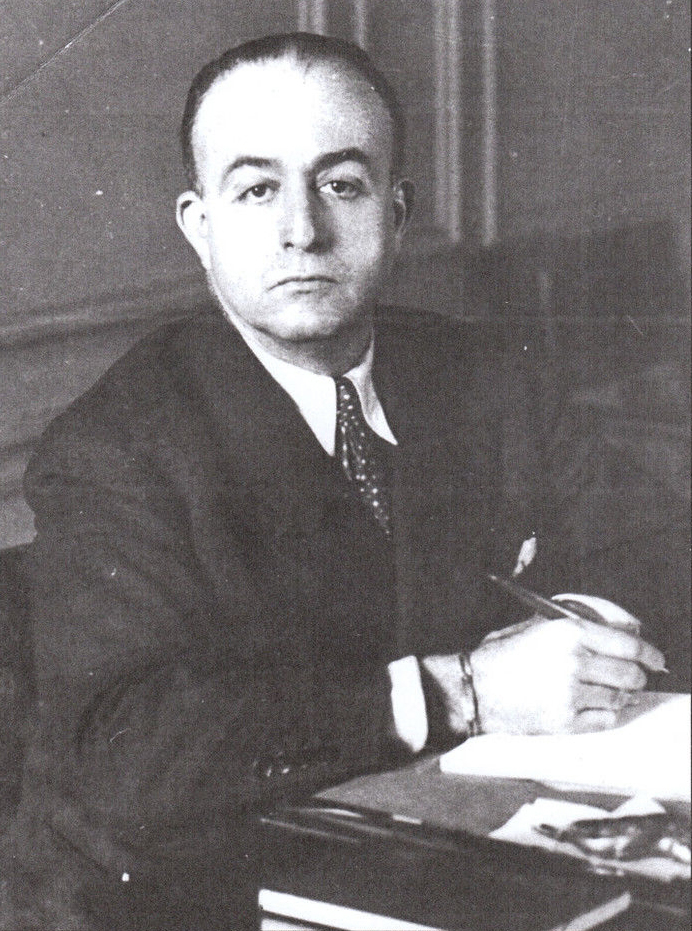
The Cagoule’s structure was like that of an army, split into sections for recruitment and equipment, intelligence, and operations. Below this were the “soldiers”, who were organised into cells of up to 12 men; a group of three cells formed a unit, units combined to form battalions, battalions into brigades, then brigades into divisions. Crucially, the identity and existence of members outside on thier own cell were unknown to the foot soldiers so that knowledge of the mission and aims of the organisation could be carefully controlled. (Generally speaking, Cagoule’s recruits joined because they wanted to fight to protect France in the event of a Communist uprising; they were kept in the dark that the Cagoule leaders intended to provoke exactly this event and would fight against French institutions, like the government and the army – something that would have been unpalatable to these highly patriotic men.)
There is a degree of doubt over the number of Cagoule members. Deloncle boasted that he could call upon 12,000 men in Paris and a further 120,000 in provinces, but these numbers are likely to be greatly inflated. It may be that Deloncle was counting members of associated groups whom he believe would come to their aid when called upon. What is more clear is that the Cagoule was receiving generous financial backing from a number of French businessmen. The elevated social standing of the Cagoule leaders meant that they had contacts in influential positions in French businesses and institutions. Among them was Eugène Schueller, the founder of cosmetics giant L’Oreal and a close friend of Deloncle’s, who gave generous donations and allowed Cagoule meetings to take place in his office at the L’Oreal headquarters. Another donator was the tyre company Michelin, to the tune of 3 million francs. This funding was crucial to the success of the Cagoule’s operations. It enabled them, for example, to buy the explosives that would be used in the terrorist attacks of 1937 in which the Cagoule blew up two buildings in central Paris in an attempt to frame the Communists, killing two police officers in the process.
Arming its men to fight in the expected civil war a chief preoccupation of the Cagoule. They had some help in the form of a high-ranking military officer, Georges Loustaunau-Lacau, who aided them in buying armaments. (Loustaunau-Lacau aside, the Cagoule’s attempts to infiltrate the French army – to have its support in the event of a government coup – was unsuccessful.) The man responsible for gun running was Gabriel Jeantet, a journalist and political activist. He struck deals with sympathetic parties in Italy and Spain and smuggled guns into France via Belgium and Switzerland. When the police launched a sweep of arrests against the Cagoule in November 1937, they seized “120,000 rifle and pistol cartridges; 500 machine guns; 65 submachine guns; several anti-tank and anti-aircraft guns; 17 sawed-off shotguns and 134 rifles, together with two tons of high explosives” (Time Magazine, 29 November 1937).
It was as a result of one of these weapons deals that the Cagoule leadership showed their utter ruthlessness in dealing with group members who betrayed them. Two Cagoulards, Léon Jean-Baptiste and Maurice Juif, had been charged with buying guns but were later discovered to have inflated the price of the weapons and kept the profits for themselves. Jean-Baptiste and Juif tried to run but the Cagoule caught up with them; Jean-Baptiste was stabbed to death in October 1936, while Juif was garroted, stabbed, then shot in the head in February 1937.
The murderers of Jean-Baptiste and Juif will never be known but there was one Cagoulard who could be called upon to carry out exectutions when required. His name was Jean Filiol. He was Deloncle’s righthand man and fellow founder of the CSAR. The men shared the same vision but, while Deloncle excelled at backroom plotting, Filiol wanted to take the action to the streets, with bloody consequences for those who crossed him.
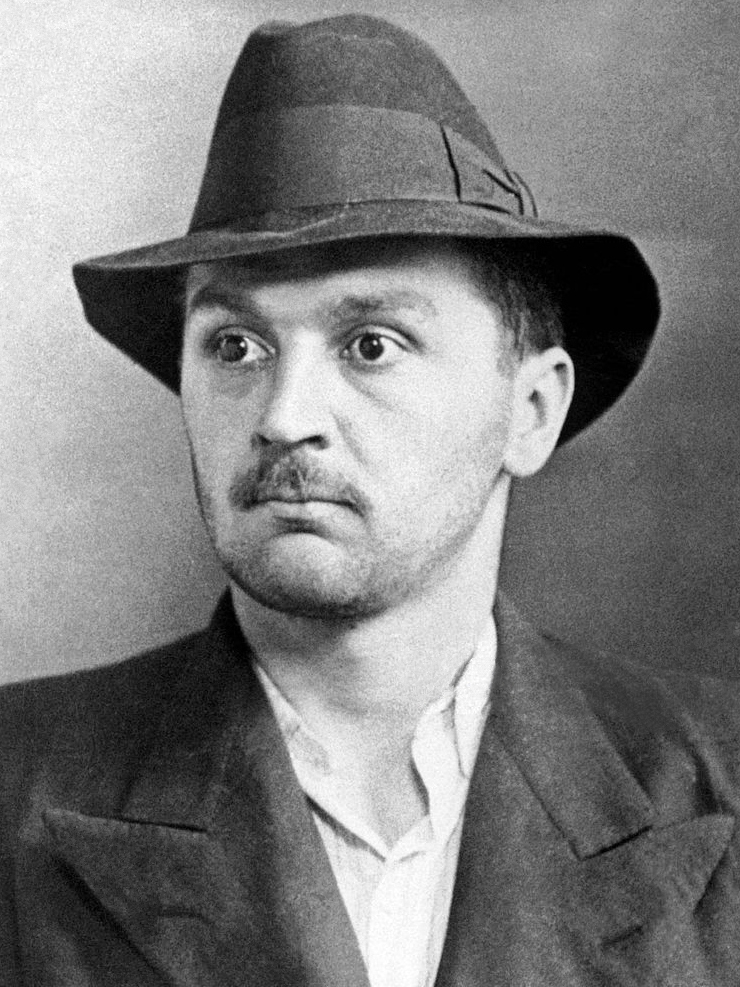
It was Filiol who is believed to have murdered Navachine as he walked his dog near his home west of Paris. Navachine was a Jew and a Russian, a banker who worked closely with Léon Blum on implementing his socialist economics. He symbolised everything that the Cagoulards detested and his murder can be read as a kind of statement of intent. Tellingly Navachine was stabbed to death though his assailant was also armed with a handgun – he used it to shoot Navachine’s dog – which leads to the conclusion that his killer was making a point with the savagery of the attack. This was no clean death; it reeked of hatred.
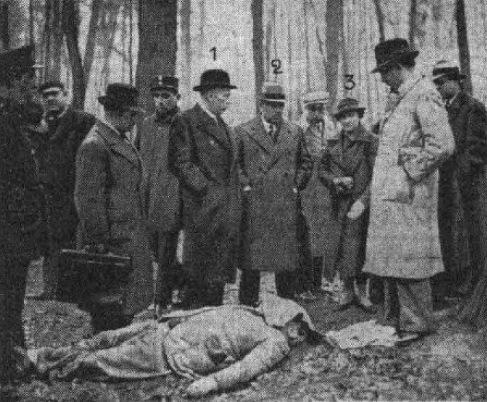
While no one has ever been convicted of killing Navachine, Filiol was found guilty (in absentia) of the murders of the Rosselli brothers in June of the same year. Carlo Rosselli was a prominent anti-fascist journalist and academic who had escaped imprisonment in Italy for his opposition to Mussolini. During his exile in France, he continued to publish a newspaper that encouraged Italians to rise up against the dictatorship, highlighting Mussolini’s army’s recent failings in the Spanish conflict as evidence that the regime was not all powerful. Nello Rosselli, a historian and journalist, shared his brother’s politcal beliefs but was less voluble. He had managed to remain a free man in Italy and was even granted permission to travel to France for research – though, in fact, it was to vist his brother. The reunited brothers enjoyed a holiday together in a Normandy spa town with Carlo’s English wife Marion. Little did they know that their every movement was being tracked by Filiol and assocates.
Far from easing their restrictions on Nello being a sign of complicity, the Italian fascists allowed him to leave the country so that he would lead them to his brother in France. The Italians and the Cagoule had struck a deal in which the Cagoule would carry out the Rossellis’ executions in return for arms. So it was that the brothers found themselve travelling along a deserted country road, having dropped off Marion at the train station. A car was broken down in front of them, its driver and a female passenger by the side of the road. As Nello stopped driving and exited their vehicle to help, another car pulled up from behind, blocking their exit. The trap was sprung. Jean Filiol – the driver whose car had “broken down” – shot Nello repeatedly until he fell on the ground. Another Cagoulard, Fernand Jakubiez, finished the job, stabbing Nello 17 times. Next, Filiol moved on to Carlo, who was still in the car, shooting him dead. The Cagoule gang drove the the brothers’ bodies in their own car to nearby woods where they were dumped. They left a timed explosive device in the car but the Normandy rain put out the lit fuse, leaving the car – with all its physical evidence – intact for the police to find. Filiol fled France not long after these murders, hiding out in civil war-torn Spain for the next few years.
The women of the Cagoule
The Cagoule mirrored the outside world in that it was founded, financed and run by men. Within the far-right group, it was men who plotted and carried out the killings, the bombings, the destruction. But the Cagoule did have female members; in fact, women were very useful to the Cagoule precisely because of the fact that they were overlooked and underestimated in everyday life. For example, a man hanging around on a street might draw negative attention, where a woman’s presence would be considered benign. This made them excellent at passing messages, acting as go-betweens and surveillance. A young woman, Jacqueline Derville, along with her brother and associates, followed Dimitri Navachine in the weeks leading up to his death. The Derville siblings were devoted followers of Jean Filiol and passed their observations of Navachine’s routine onto Filiol, who used it to spring his attack in the place Navachine would be most vulnerable.
The Cagoule also used women to divert suspicion during operations: to create a sense of normality, or play on mens’ instinct to protect the “fairer sex”. One woman, Alice Lamy (Jean Filiol’s long-time partner) was used in several set ups. It was Lamy who played the distressed car passenger whose car had broken down, prompting the Rosselli brothers to stop their car and help. Another even more brazen use of Lamy’s damsel-in-distress act was during an attack on some aircraft that the French government was covertly sending to the Spanish Republicans. The Cagoule arranged with the Spanish Nationalists to destroy the planes before they left France. To gain access to the army hangar in which the planes were being stored, Jean Filiol turned up dressed as an army captain, accompanied by a dishevelled Alice Lamy who claimed that she had been sexually assaulted by a soldier at the base. The commanding officer, intimidated by Filiol’s higher rank, allowed them to enter to search for her “attacker”. It was while searching that Filiol was able to plant timed explosives in four of the planes, which exploded later that night.
A final way in which women aided the Cagoule was in obtaining information and new recruits. In his diary, high-ranking Cagoulard Aristide Corre made explicit reference to how female operative were used in this way. In one entry, Corre writes about a swearing-in ceremony in which a new member, Marie de Massolles, took an oath of loyalty to the group, anticipating gleefully how her social connections could be beneficial. In another, he mentions how one of his lovers, the aristocratic Hélène d’Aton, was off sleeping with a contact in the police that evening as a means of getting intel. In yet another diary entry, Corre credits the seductive powers of Thérèse Harispe for the large numbers of navy recruits to the Cagoule in Toulon. Clearly, women had their uses, albeit in a limited way that reads today like exploitation.
Whether through their relationships with Cagoulard men, their own political convictions – or a combination of both – there were many dedicated women of the Cagoule. They were willing to do what they could, with whatever means they had at their disposal, to further the far-right cause. Gender stereotypes were manipulated to make these women appear far less dangerous than they were, and sexuality became a weapon that could be used to their advantage. There was another woman who used her beauty, her streetsmarts, her social mileau and her background to the Cagoule’s advantage. That woman was Laetitia Toureaux.
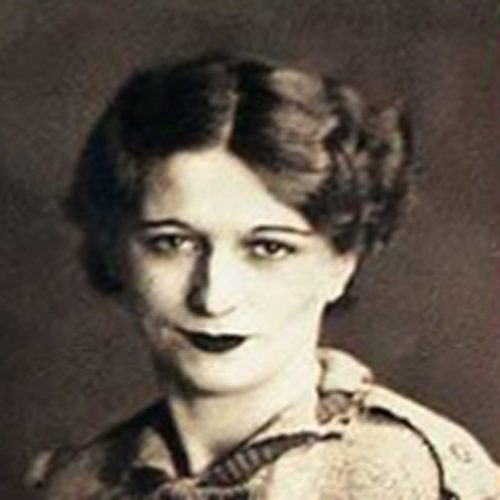
Laetitia Toureaux and the Cagoule
The nature of Laetitia Toureaux’s involvement with the Cagoule is not fully known. One reason for this is that some of the police’s report into her death is sealed and will not be open to the public until 2038 – a fact that speaks volumes about the sensitivity of the material included within. Nor has anyone ever been charged, let alone convicted of her murder. However, as Inspector Chenevier in his final report said, every trail of evidence led directly to the Cagoule.
So while there are certain things that we don’t know, there are others that can be established, or at least reasonably assumed. For example, Laetitia is known to have had right-wing leanings – possibly as a result of her marriage to the son of wealthy factory-owners – which might have made her sympathetic to the Cagoule’s cause.
We also know that Laetitia was a practiced spy, working for both a private investigator and as a police informer. It’s also highly proble that she learnt her trade working for the Italian government for many years, feeding them information on the Italian emigré community in Paris. Her job in the coat room of l’As de Coeur put her into contact with people from all walks of society and, as we saw previously, coat rooms were often used as a convenient letter drop-off point. What’s more, Laetitia visited her father in Italy once a year – a perfect cover were she to act as a go-between for the Cagoule with the Italian fascists.
Finally, Laetitia was an attractive young woman, a childless widow with no responsibilities and a bright personality, who was able to talk to and charm people easily. From the Cagoule’s point of view, she is the sort of woman that men wanted to sleep with, and she had no ties preventing her from completing these kinds of missions.
The circumstances of Laetitia’s life – her beliefs, her skillset, her nationality and personal situation – made her a prime candidate for employment by the Cagoule. But what, if any, evidence was there that she was tangled up with them?
Like so much of the Laetitia case, there are hints but few concrete facts. That said, there is one very strong link between Laetitia and the Cagoule – one confirmed by contemporary police reports – and that is that she was the lover of a high-placed member of the Cagoule.
Rumours about a romantic relationship began as early as two weeks after her death. On 25 May 1937, l’Humanité newspaper reported that, during a search of her home, the police found a stack of letters between Laetitia and a well-known right-wing politician. From the contents of the letters, it seemed that the relationship between the Laetitia and the unnamed man was that of collaborators as well as lovers; he refers to himself as her “protector” and her as “his protégée”. Though unnamed in the newspaper article, in all likelihood the man who sent the letters was Gabriel Jeantet, the Cagoule’s chief gun-runner.
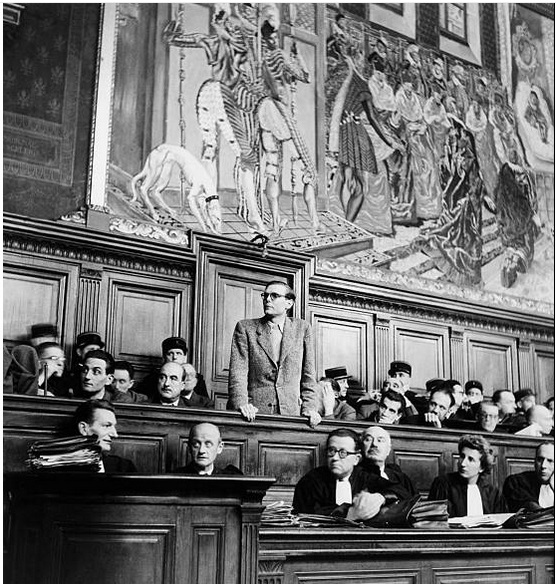
It is likely that they met in around 1935-36 at one of the bals musette where Laetitia worked and Jeantet liked to attend. He was a year older than Laetitia, born into a wealthy family of strong right-wing convictions which he shared. His priviliged upbringing brought him into contact with men who would go onto hold powerful positions, like Eugène Deloncle and Françoise Mitterand, the future president of France, and a life-long friend. Gabriel Jeantet is named in Aristide Corre’s diary as one of the founder members of the Cagoule, along with Deloncle and Jacques Corrèze. He was said to be handsome and sophisticated, the smartest of the Cagoulards, and a ladies’ man. The police file held on Jeantet for his participation in the Cagoule’s crimes lists Laetitia as his mistress but gives no further details.
From this information we are left to piece together the likeliest scenario: that the couple met and became lovers; Jeantet learned about Laetitia and realised she could be useful to him. By November 1936, Laetitia was already spying on Communists at the Maxi factory and in la Ligue Républicaine du Bien Public for Georges Rouffignac and his police contacts, so it makes sense that she shared her findings with her Cagoule lover. She started acting as a messenger for the Cagoule – her already having established connections with the Italian secret service is likely to have made her a seem like a trustworthy option. But was she? Laetitia had well established relationships with the French police, and was likely keeping them informed on Cagoule activities in turn.
In 1937, the Cagoule’s began their bloody campaign, starting with the murder of Dimitri Navachine in January. His death must have brought home the seriousness of the situation Laetitia was involved in. As the year went on, the Cagoule plot to murder the Rosselli brothers in exchange for Italian weapons started to take shape. Was Laetitia used as a go-between in the arrangements? Given her background she would have been an excellent candidate for the job. Perhaps the knowledge of the murders was the reason that, in the spring of 1937, she began to drop hints to those closest to her that she was in trouble. Laetitia was in a dangerous situation that she wanted to extricate herself from. Was she going to tell the police what the Cagoule had planned? And did the Cagoule suspect? It was a fatal error, if so. The Cagoule were ruthless in dealing with betrayal, as their executions of Léon Jean-Baptiste and Maurice Juif attested. And so on the 16th of May – less than a month before Carlo and Nello Rosselli were murdered – Laetitia Toureaux was founded dying on a Paris métro train.
Next time: Murder on the Paris Métro: Who killed Laetitia Toureaux, and how
Part one: Murder on the Paris Métro: the unsolved death and mysterious life of Laetitia Toureaux
Part two: Murder on the Paris Métro: the double life of Laetitia Toureaux
Sources
My main source for this article is this excellent book Murder in the Métro: Laetitia Toureaux and the Cagoule in 1930s France by Gayle K. Brunelle, Annette Finley-Croswhite (LSU Press) which helped fill in lots of blanks and straightened out some of the conflicting information I’d come across. I’ve also read a great many contemporary newspaper accounts via RetroNews.fr, the excellent French-language newspaper catalogue run by the French National Library. Finally, a big mention should go to the site Crimocorpus.org, a Museum of Crime, Justice and Punishment, via which I was able to access Detective (various issues), a French-language magazine that covered the story in great depth.

